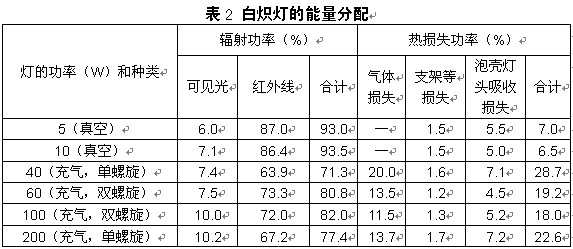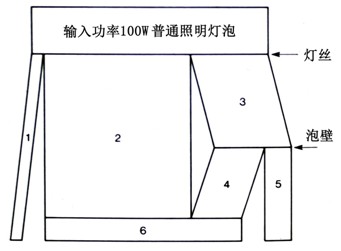Light is a form of energy that can travel from one object to another without the need for any object as a medium in the process of propagation. This way of transmitting energy is called radiation. The meaning of radiation is that energy travels from energy to a straight line in all directions, although in reality it does not always travel in a straight line, especially when passing through an object. . Some forms of radiation are composed of particles, such as those caused by radioactive materials. Light was once thought to be a particle beam, but it has been proved by practice that it is more appropriate to describe the characteristics of light with fluctuations, and the direction of light is the direction of wave propagation. About 100 years ago, it was confirmed that the essence of light is electromagnetic waves. Later, in the electromagnetic wave with an extremely wide wavelength range, visible light waves accounted for only a very small part.
The visible light portion of the electromagnetic wave has a wavelength in the range of about 380 nm to 780 nm, and various wavelengths in this range can be distinguished by the color perception of the eye. Blue and purple are short waves, red is long waves, and yellow and green are in the middle of the visible wavelength range.
Electromagnetic radiation at wavelengths above the purple and red ends of the visible spectrum is referred to as ultraviolet radiation and infrared radiation, respectively.
The radiant energy of a light source refers to the energy of light radiated by a light source, including ultraviolet radiation energy, visible radiation energy, and infrared radiation energy. Energy other than radiation is non-radiative loss, including conduction and convection losses.
First, the radiant energy analysis of the light source
1. Energy analysis of incandescent lamps
The energy output of visible light radiation, infrared radiation, conduction and convection loss of some incandescent lamps is shown in Table 1.
Table 1 Energy output of some incandescent lamps

As can be seen from Table 1, taking 100W incandescent lamp as an example, the proportion of visible radiation energy is 10.0%. The proportion of infrared radiation energy is 72.0%. The proportion of energy radiated in the form of light is 82.0%. Conduction and convection losses account for 18%.
Non-radiative losses of incandescent lamps include absorption losses in the bulb head, gas losses, and heat losses from the stent.
The energy distribution of visible, irradiance and non-radiative heat loss of vacuum incandescent, single- and double-helical incandescent lamps is shown in Table 2.

It can be seen from Table 2 that most of the power of incandescent lamps becomes infrared radiation, and the proportion of visible radiation power is small, generally less than 10%. Infrared radiation accounts for 67% to 87%.
An example of the energy balance of a 100W general lighting bulb (GLS) is shown in Figure 1.

1. visible light radiation 5W; 2. infrared radiation from the filament 61W;
3. Conduction and convection loss from the filament to the bubble wall 34W; 4. Infrared radiation from the bulb 22W;
5. Total conduction and convection loss 12W; 6. Total infrared radiation 83W.
Figure 1 Energy balance of a 100W GLS lamp
As can be seen from Figure 1, for the 100W GLS example, visible radiation accounts for only 5%, infrared radiation accounts for 83%, and conduction and convection losses account for 12%.
In general, forward infrared radiation accounts for the vast majority of incandescent energy, with a large amount of energy used for forward heating and only a small fraction of energy for forward illumination.
